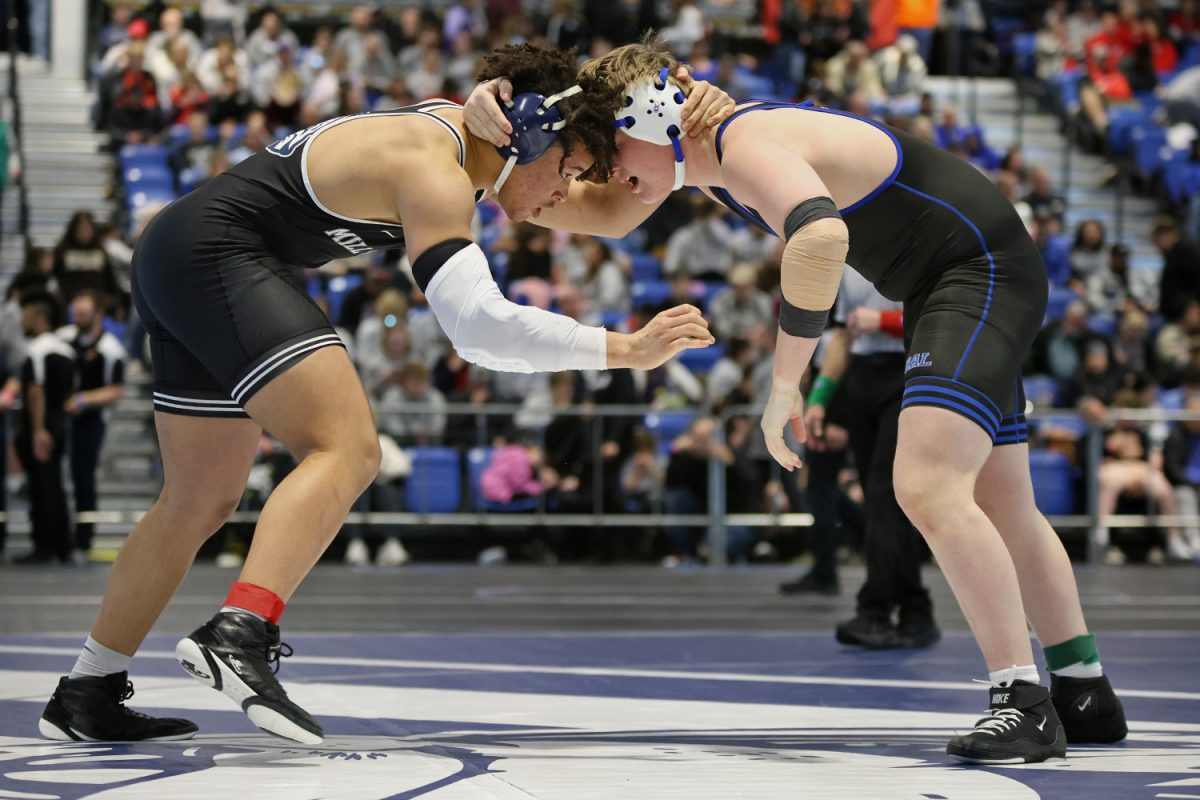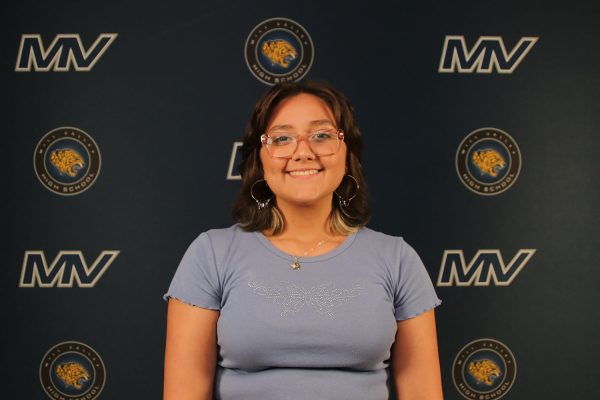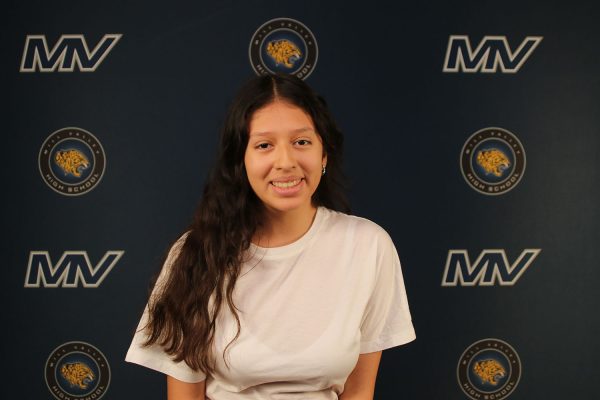Who you live with shapes who you are. According to a survey done by the JagWire, of 109 students 67% said their family dynamic has impacted them in a positive way. From living with one parent to living with step parents, no two families are alike. Everyone has a different perception of what family means to them, senior Maya-Rose Yancey believes family is more than the people who are blood related. “I would say a family is a group of people that you can talk to all the time, and make deeper connections than you would with just casual friends,” Yancey said. Similarly, junior Rider Rew feels that family doesn’t have to be the person’s family they were born into. “I think [blood relatives] give you the expectation that they’re supposed to be a part of your family, but if they’re not good people, then you don’t have to consider them family,” Rew said. “You’re not inclined to hang out and enjoy someone just because you feel like you’re supposed to.” According to Pew Research Center, 67% of families in the 1970s were nuclear, meaning a mom, dad and children. Now, that number has dropped to 37%. Family dynamics are changing, and it’s no longer the status quo for families to be limited to a mom and dad.

The nuclear family is a very traditional family dynamic that most people are familiar with. These families have one mom, one dad, and children. This dynamic is one of the most common at the school.
Freshman William Crawford shines a light on what his nuclear family dynamic looks like.
“My mom works on the financing side of a hospital, and my dad is a para at Mill Valley. My family dynamic is pretty basic. Both of [my parents] pitch in to make dinner and do occasional chores around the house,” Crawford said. “I have two siblings, Miles and Ernie; one’s in middle school at Monticello Trails, and one’s at Prairie Ridge.”
Sophomore CJ Hereth also has a similar nuclear dynamic to Crawford, with a mom, dad, and siblings.
“My dad is an engineer at Hewitt, and it pays pretty good. My mom was an orthodontist assistant,” Hereth said.”I have four sisters, two older and two younger, no brothers.”
While Hereth and Crawford both have siblings, Yancey is an only child.
“It’s just me and my parents,” Yancey said. “We have a dog as well, but it’s mainly just my mom and I, [and] my dad.”.
Although these families have few differences in their mechanics, they do have things that set them apart. Crawford’s family interests differs from others.
“I feel like some of the interests of my family are a little different, mostly relating to sports, because my dad is the soccer coach at the high school, so a lot of our family is soccer-related,” Crawford said.
Yancey talks more to her mother about emotional things and her father about logical things.
“I’m much more open when talking to my mom about certain topics,” Yancey said. “And if I’m talking to my dad, I can still be open, but you get different answers that might not be as in sync or understanding.”
While nuclear families may not differ extremely from others, Hereth shares why he admires his parents’ relationship so much.
“I admire them being so open, while they’re sometimes too open to me,” Hereth said. “They often do kiss a lot in front of me, which embarrasses us kids, but it does set a good expectation for what a good, loving relationship looks like.”

Immigrant families are different from nuclear families because of the struggles they face and their different ways of doing things. These families had to go through a lot when they came to America, despite the fact they immigrated legally.
Junior Hiya Sood opens up about how and why her family moved here.
“My mom immigrated here when she was around 12, and there was a lot of discrimination and bullying going on when she was in high school. She didn’t know English, nor did my grandparents, but they immigrated here because of my great grandma,” Sood said. “Then my dad got here after he married my mom because they had an arranged marriage.”
Setting aside the obvious differences from other families, Sood has seen differences between her family and her peers.
“I always see differences between my family and other families. Recently, I figured out my friends’ families are a lot older,” Sood said. “They had their kids when they were [in their] 30s and 40s, now, their parents are in their 60s, and my parents are [in their] 30s and 40s.”
The Kaur family has a similar family dynamic. Junior Prabjot Kaur and sophomore Amrit Kaur’s parents immigrated here before they were born.
Prabjot explains why their parents immigrated here from India.
“My grandpa came, and then my mom came here when she was [around] 17,” Prabjot said. “Then she went to college here for a year. My dad came here after eight years of struggle because of 9/11.”

Although the Kaur’s moved here before all of their children were born, Prabjot went back to India when she was little.
“I lived in India for eight years because my parents wanted me to learn the culture and language, so I came [back to America] in fourth grade, and I barely knew any English,” Prabjot said.
Amrit has an accent because of this, which has caused problems for her.
“I have an accent and people like making fun of it. Now, I don’t care, but when I was in middle school, I did care,” Amrit said. “I did take it to heart sometimes.”
Even though Amrit struggled with the repercussions of having immigrant parents, she has also learned things from them.
“[I’ve learned] that it’s okay to be different because everybody’s gonna be different in their own way. It could be in a color or their personalities. Everybody’s different, so you have to accept it,” Amrit said.
Junior Noah Kim and sophomore Josh Kim’s parents are also immigrants, but their situation is a little different.
“Both of my parents were born in South Korea. My dad moved to America when he was four, but my mom came to the U.S. when she was 26 on a visa for college education,” Noah said. “There’s a big difference [between them]. My dad is super American, and my mom is still deeply rooted in Korea, and she always speaks Korean in the household.”
Josh’s parents’ expectations have impacted his life .
“With Asian parents, they have more expectations for academics and music,” Josh said. “I’ve been in music lessons for a while. Having immigrant parents has furthered my musical career.”
Not only does having immigrant parents impact Josh’s academics and musical career, but his interpersonal relationships as well.
“[I’ve experienced] just basic racism, like in school people will make comments and they think it’s funny but it still offends me,” Josh said.
Noah explains how having immigrant parents has helped him have a more open mind.
“[Having immigrant parents] helped me become a more open person, just because I understand that a lot of people come from different backgrounds and they all have different experiences,” Noah said. “A lot of the things that happen within your household defines who you are.”

Another family dynamic is separated and/or divorced parents. This dynamic can have complications but it also offers numerous opportunities for personal growth.
Divorced families are unique as they create several family dynamics. When parents remarry, it results in step-families, creating a larger or nuclear family. According to Child Trends, about two-thirds of remarriages involve step-families.
On the other hand, some parents remain single. The National Library of Medicine notes that 58% of single parent families are mainly the result of divorce.
Freshman Zoey Zagorski was an only child before her mother remarried. Re-marriage allowed her to experience and enjoy a different family dynamic with siblings.
“I like having step-siblings. I think it was nice to grow up as an only child. But then, having a sibling now, it’s better and less lonely,” Zagorski said.
In addition, having step-parents can create good role models. This was the case for sophomore Charlie Barrett who, because of divorce has a stepfather.
“At my mom’s house, he [stepdad] acts like my dad. So he’s very, like, protective over me, and, like, cares for me a lot,” Barrett said.
Having different family dynamics can lead to having more siblings and step-parents. However, having different family dynamics and separated families can also present various challenges, particularly when spending time with each other. The most common way to split time is 50/50. Ultimately, the effectiveness of the arrangement depends on the parents.
For Zagorski, it can be tough to compromise with each family.
“There’s more family dynamics that you have and it’s harder to be with everyone and make everyone happy,” Zagorski said.
For sophomore Blayne Christman balancing each family is always a journey of conflict and feelings.
“I’m sad and baffled that I didn’t choose one parent, but I’m also happy that I chose one parent because I had fun [with the other parent], I’m also sad that I might have had fun with the other it’s, very conflicting,” Christman said.
Barrett has faced numerous challenges due to switching between families.
“Sometimes, you’re not as optimistic because you have to go back and forth between two homes. For holidays, I always have to go between my mom’s and dad’s, and I can’t always hang out with friends. Also, sometimes it can cause tension between my parents when I have to go back and forth,” Barrett said.
The actual process parents being divorce or separation can be very difficult, each case having its individual struggles.
For Zagorski, it was especially difficult because she was managing various complications while her parents divorced.
“It was right before middle school, and I had broken my leg. A month later, I was out of the boot, and they told me they were getting divorced. Then COVID happened was already happening,” Zagorski said.
For Christman, it was arduous after his parents split because he was separated from his brother for a few years.
“Being away from my brother for a while and only seeing him now and then made it hard to develop a strong relationship because we kind of had to,” Christman said.
Although the process of separation can be difficult. The same hardships help others grow in their qualities and what they appreciate.
For example for Christman, having limited time with his brother made him more appreciative of his time.
“What we [him and his brother] have made us value our time together because we learned not to take the time we had with each other for granted,” Christman said.
Additionally, divorce can serve as a valuable lesson in personal growth and can offers other positive benefits.
“[Divorce] Made me stronger and more mature. I value the things like the time I spend with people. I also get more presents on holidays, which is always fun. But the best part is that I get to spend more one-on-one time with each parent” says Barrett.

Not all families have two parental figures, some families have one single parent. In 2024 there were approximately 9.8 million single parent households, according to the United States Census Bureau.
Sophomore Gracie Pollicita details how she has adapted to living with just her mother.
“There’s just some things you have to figure out for yourself,” Pollicita said. “Especially not having a dad, I know it sounds cliche but you have to learn how to fix things.”
Junior Rider Rew, who also lives with just his mother, explains how it was difficult when he was a kid.
“Growing up I was lonely,” Rew said. “[My household now] is pretty well off financially, but we didn’t have much in the early years, so my mom was a stay at home mother who did editorial work. She was usually always in her office doing work, so I was on my own a lot.”
 Pollicita highlights some of the lesser known struggles of living in a single parent household.
Pollicita highlights some of the lesser known struggles of living in a single parent household.
“I think one of the most difficult parts is the age gap where I don’t have my license, and having one parent have to do everything, while everyone kind of assumes that you have two who can drive you places [is hard],” Pollicita said.
Just like any family, there are a multitude of things to balance with both siblings and parents. Pollicita has found that balance in making sure she is supporting her brother and her mom.
“Even though my sister’s away from college, making sure my brother knew he could talk to me, and also making sure that my mom knew that she could tell me what was going on,” Pollicita said.
For some single parent families, the children will have contact with the other parent, for Rew he still sees his dad and tries to strike a good balance in their relationship.
“I’ve been a lot more busy with work and school, so I try to call him a lot more, and also try and set up days where I’m able to go to dinner with him,” Rew said. “But [I] have a good healthy balance now.”
While the National Library of Medicine says that some single parent households might be more likely to be bullied, Pollicita noticed that most of her peers treat her the same when they find out she lives with her mom, whereas adults or teachers might treat her differently.
“I noticed adults pity me a lot, like a lot of my teachers and administrators,” Pollicita said. “They definitely try to be a little nicer when they find out because they’re trying to support me. I don’t think I get a lot of sympathy from kids my age, though.”
Rew believes that he isn’t treated differently for his family, and that non-nuclear families are becoming more accepted in society.
“In general, I never hear anyone really care if your parents are divorced or if you live at home with just your mom or dad,” Rew said. “[Different family dynamics] are getting more and more normal.”














